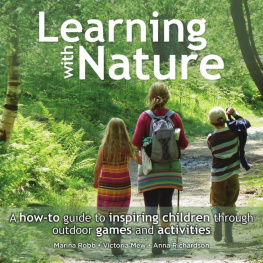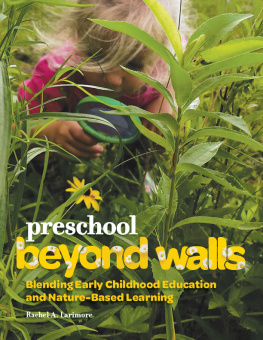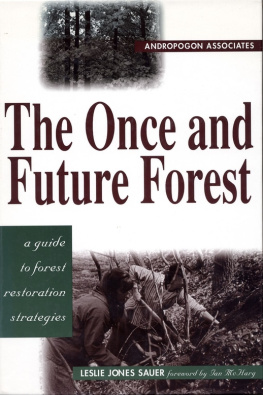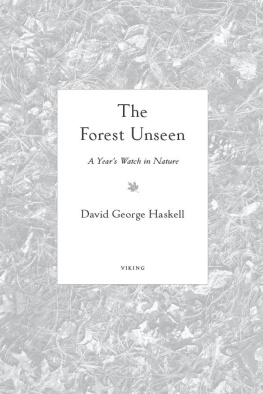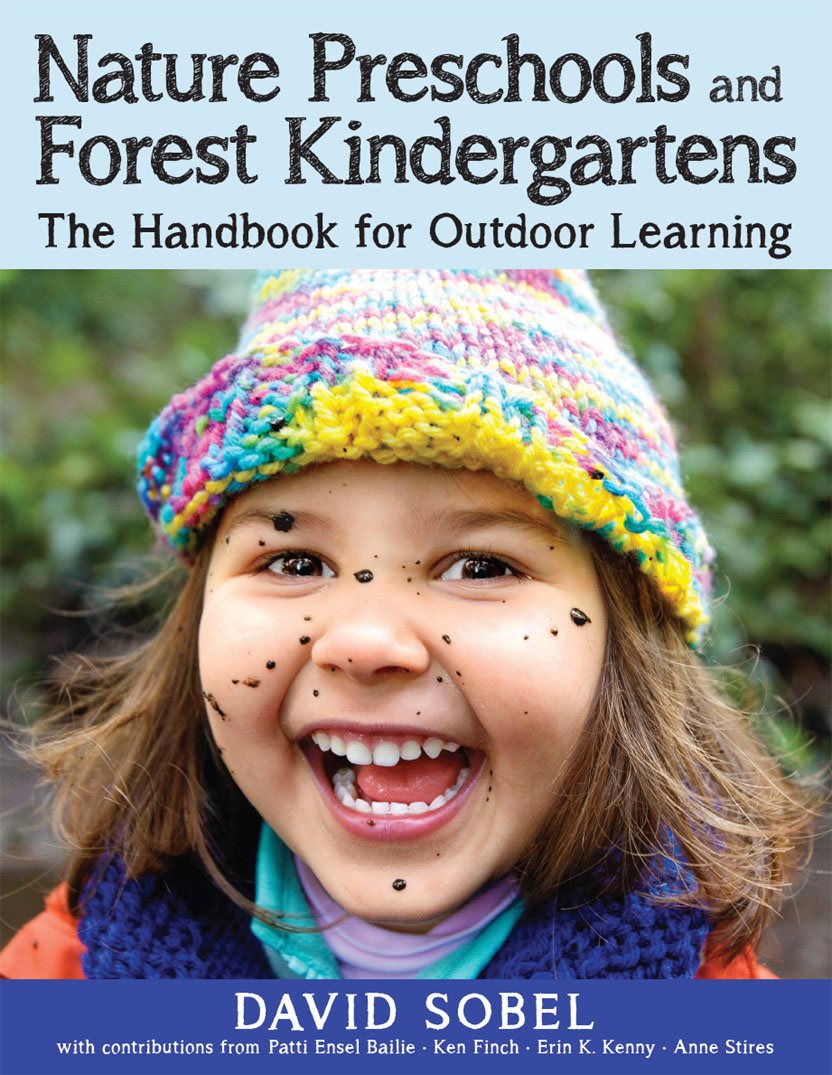


Published by Redleaf Press
10 Yorkton Court
St. Paul, MN 55117
www.redleafpress.org
2016 by David Sobel, Patti Ensel Bailie, Ken Finch, Erin K. Kenny, and Anne Stires
All rights reserved. Unless otherwise noted on a specific page, no portion of this publication may be reproduced or transmitted in any form or by any means, electronic or mechanical, including photocopying, recording, or capturing on any information storage and retrieval system, without permission in writing from the publisher, except by a reviewer, who may quote brief passages in a critical article or review to be printed in a magazine or newspaper, or electronically transmitted on radio, television, or the Internet.
First edition 2016
Cover photograph by AP Photo/Ted S. Warren
Interior design by Wendy Holdman
Typeset in Palatino and Avenir
Interior photos on page 57 by Bob Bailie; 98, 98, 100 by Mauren Campbell; 161 by Ken Finch; 37, 80, 81, 150, 154 by Lia Grippo; 149, 173, 196 by Claire Harris; 88, 131, 133 by Riley Hopeman; 206, 220, 231, 232, 233, 234, 235, 240, 241, 243, 244 by Erin Kenny; 37, 48 by Rachel Larimore; 50 by Stephanie Lorek; 28, 38, 40, 46, 61, 146, 208 by Jocelyn Mathewes; 198 by Karen Olsen; 31, 47, 77, 111, 127, 140, 194, 201, 215 by Molly Steinwald; ii, 8, 9, 11, 14, 15, 17, 21, 24, 32, 102, 126, 129, 139, 144, 145, 193 by Anne Stires; 94, 96 by Mary Temple; and 115, 116 by Erica Wilson.
Library of Congress Cataloging-in-Publication Data
Nature preschools and forest kindergartens: the handbook for outdoor learning / [edited by]
David Sobel; with contributions from Patti Ensel Bailie, Ken Finch, Erin K. Kenny, and Anne Stires. First edition.
pages cm
Includes bibliographical references and index.
ISBN 978-1-60554-430-4 (e-book)
1. ScienceStudy and teaching (Early childhood) 2. ScienceStudy and teaching (Elementary) 3. Nature study. 4. Outdoor education. I. Sobel, David, 1949 editor.
LB1139.5.S35N38 2015
372.35'044dc23
2015018991
Table of Contents
Guide
Contents
Its been an honor and a privilege to work with a number of inspired and industrious colleagues to write this book and to launch the Nature-based Early Childhood Certificate (NbEC) program at Antioch University New England in Keene, New Hampshire. Each of the contributing authors either teaches a course in our new program or has been a featured speaker at our annual In Bloom: Promising Practices in Nature-based Early Childhood conferences. I thank each of the contributors to this book for their inspiring words and work.
Anne Stires, author of in Alna, Maine. The school provides exemplary nature preschool and forest kindergarten programs for midcoast Maine children and families. She is a pioneer of the nature-based early childhood movement in New England.
Patti Ensel Bailie, author of . She was the first person in the country to get a doctorate focusing on nature preschools, and she is an acknowledged leader in this rapidly emerging field.
Ken Finch, author of . He has been a tireless advocate for nature preschools throughout the country.
Erin K. Kenny, author of on Vashon Island in Puget Sound, Washington. Erin is one of the earliest originators of the forest kindergarten approach in North America and is a frequent keynote speaker on nature-based early childhood approaches.
It has been great good fun, and refreshing too, to spend hours outside with young children and innovative early childhood teachers. We flop down and watch the Pooh sticks drift down the marshy stream under the bridge, we throw pinecones at balanced rock targets, we build stick forts, we thrash the mud with sticks, we lie on our backs and watch the birds flit from branch to branch. We sing Little Jack Frost, Get Lost and Itsy Bitsy Spider and Come Walk with Me, and things are right with the world. Children are happy and ruddy-cheeked and active. And I wonder, How did we stray from this path?
It has been a kind of homecoming for me, a return to my first incarnation as an early childhood teacher, able to laugh with children rather than always thinking about what we need to teach them. While feeding the goats with a bunch of four-year-old boys last week at the Wild Roots program at Stonewall Farm, I realized how much four-year-old boy kids are like little goat kids. They all want to gambol onto the picnic table, butt heads, nibble everything, splash in the water, trip-trap off into the high grass. This is what these little creatures should be doing; this is what constitutes healthy development. And I am thankful that there are hearty educators with the energy and grit to don all those layers of warm clothing and keep putting mittens back on those cold hands.
Therefore, thank you to all the children and teachers who have gotten down on the ground with me in San Francisco, Ottawa, Wyoming, North Carolina, Washington DC, midcoast Maine, Michigan, Boston, upstate New York, and all across New Hampshire and Vermont while writing this book. Thanks to all of you who believe, as Thoreau claimed, that in Wildness is the preservation of the world. May you instill the kernel of wildness in all your children.
Much appreciation to the Storer Foundation, which has supported the growth of the nature-based early childhood movement across North America. Very specific thanks to Sara Wise, my Redleaf editor, who helped to elegantly prune the manuscript into a graceful form. And similar thanks to my research assistant and godsend, Tricia Hurley, who created a masterful system for tracking down parental permissions for the pictures of children who appear in this book.
Finally, thanks to my colleagues in the Education Department at Antioch University New England, who are committed to making the world a beautiful and wondrous place for children.
Theres a new movement afoot in the land of early education, and that movement is nature-based early childhood. The nature-based early childhood movement has twin origins. The nature preschool movement started in North America around the time of the original Earth Day in 1970 and has quietly spread its mycelium underground for forty years. Now the mycelia are budding and sending up mushrooms around the country. The forest kindergarten movement similarly surfaced in the 1960s in Scandinavia and then flourished in the 1990s. Now there are thousands of them throughout Norway, Sweden, Denmark, Germany, the United Kingdom, Australia, and New Zealand, and theyre cropping up in many Asian countries as well. Forest kindergartens started showing up in the United States in the last decade, and each week I hear about a new one. Clearly, their time has come. This book is a beginning operators manual for all those interested in starting a nature-based early childhood program and for those interested in naturalizing existing early childhood programs.
The book covers the gamut from history to current practice, from theory to brass tacks. The first and last chapters of the book get us out into the elements. They provide portraits of a day in the life of two exemplary programs in the United States. The following early chapters explore how nature-based early childhood approaches are a response to the digitalization of childrens lives and the academification of formal early childhood programs. The middle chapters frame some of the organizing principles of curriculum in nature-based programs. There are lots of vibrant examples of good practice and curriculum in here. The later chapters get down to the nitty-grittybusiness planning, policy development, managing risk, assessing possible sites, and evaluating your program. Hopefully, youll learn what pitfalls to avoid, how to compose an elevator speech, whether kids should be allowed to climb trees, and which outdoor gear to suggest to parents.


